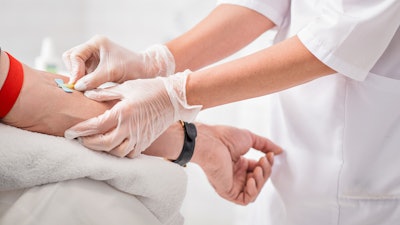
BD (Becton, Dickinson and Company) yesterday announced the results of a new Harris survey that reveals that many patients receive too many needlesticks in hospital procedures and amplifies misconceptions and lack of awareness from Americans on the risks of common medical procedures.
Needlesticks are an often-overlooked challenge but can be one of the most traumatic aspects of a patient's hospital stay. More than half of Americans (51%) report some fear of needles, and of that group, a top reason is fear of needing multiple needle insertions (31%).
The survey findings reflect that this concern isn't unwarranted: a shocking 11% of survey participants with recent hospital experience needed 10 or more sticks to obtain a single blood sample – and, more than half required multiple needlestick attempts for a single procedure (59% for IVs and 71% for blood draws). Moreover, 77% of patients are unaware that regardless of what conditions they may have, patients should expect no more than two needlestick attempts from one clinician.
Unsurprisingly, the survey highlights strong concern from nurses on the impact of repeated needlesticks to the patient care experience. A strong majority of nurses agree that repeated needlesticks negatively impact the patient experience and say that alternatives are needed to reduce the number of needlesticks patients encounter (92% and 91%, respectively).
More than just providing a better experience, nurses agree that delays to patient treatment caused by difficult venous access or fear of needles are a problem (89% and 84%, respectively) and 67% agree that problems related to vessel access consume too much time and contribute to workflow inefficiencies.
New technologies are available now, such as ultrasound guidance systems to drive first-stick insertion success for IVs and needle-free blood collection that uses an existing IV line to draw a blood sample without the additional stick.
However, while relatively few Americans are aware of these technologies (25% for ultrasound guidance systems and 17% for needle-free blood draw), interest in these technologies is incredibly high (88% and 89%, respectively). Nurses are more aware of these solutions (91% and 62%, respectively), and their interest is near universal (97% and 100%, respectively).
After having seen the various risks associated with needlesticks, most Americans (85%) surveyed agree they will be a better advocate for themselves in future hospital stays.
BD's vision imagines a future where a needlestick could be a single occurrence during a hospital stay. This includes a three-pronged approach to advance the standard of care for IV therapy and blood draws: 1) enable the right device to be placed successfully the first time; 2) use that device as a single access point for required therapies and blood draws; and 3) help the device last throughout the patient's hospital stay.
This survey was conducted online in the United States by The Harris Poll on behalf of BD among 2,006 adults age 18+ from December 11-28, 2023, including those who have received IV therapy or blood draws during a hospital stay lasting overnight or longer in the past 24 months. The sampling precision of Harris online polls is measured by using a Bayesian credible interval. For this study, the total sample data is accurate to within +/- 2.8 percentage points using a 95% confidence level. In addition, the survey included 106 RNs working in hospitals in the United States, and for this sample the data is accurate to within +/- 10.9 percentage points using a 95% confidence level.























